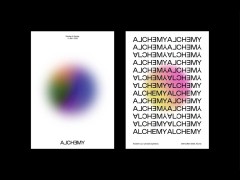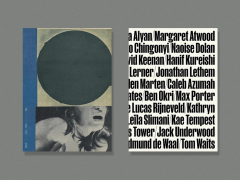“Latin script has certainly been a powerful tool in colonization.” Sam Winston’s latest book is a courageous tale into the endangered scripts that makes us
A project years in the making, Sam Winston’s latest book sheds light on the many endangered alphabets, beautiful letterforms, and mysterious scripts we should preserve. With “One & Everything” the fine artist and co-creator of the New York Times best-selling “A Child of Books,” celebrates the power of stories and written languages in a story that incorporates “over 40 different scripts and a potentially infinite amount of languages.”
“It’s a tale about a story that goes around eating all the other stories” explains author and illustrator Winston about his new book that is inspired by the Endangered Alphabets project.
For his rooted in type and culture project Winston “uses writing systems such as cuneiform and Tibetan, Egyptian hieroglyphs and ogham” illustrating the book in his signature typography-based style. By using symbols and letters that have relayed the world’s stories over the centuries Winston aims to give language a voice in print.
“Often when we think about diversity the mind doesn’t naturally go to alphabets but in a world of books, for a language to exist it must first be seen” he notes about the book.
“Once there were many stories in the world. There were stories with sunsets and wonderful tales... but one day, a story decided that it was the best, the most important story ever. It called itself the One and started to consume every other story it came across” reads the synopsis of the awarded artist’s ingenious project that continues his non-stoping typographic endeavors. Here Typeroom caught up with Winston about this bold tale about the letters that matter the most.
Typeroom: How long have you been working on the project?
Sam Winston: I have been working on One & Everything for over five years, in part due to researching all the different scripts and alphabets but also because of the type of imagery I make. It’s time-consuming because most of the illustrations are created by moving and placing single letters one at a time.
TR: What inspired you?
SW: The last book I worked on was translated into 23 languages and watching the process of the book travel (and change meaning) interested me. I was also aware of language loss and wanted to know more about that. The final piece of inspiration was an insight I had some time ago; all it takes is a change of perspective to change our world.
TR: What was the most challenging aspect of this project?
SW: On a technical level, having 50 scripts (alphabets, syllabaries, writing systems) in one software file is a nightmare. Editorial changes were complicated because the email platform would unintentionally swap letters around and the desktop publishing software also really struggled to align properly. I don’t recommend having multiple left and right reading languages on the same page! I also didn’t make it easier by having thousands of single text boxes making up the art and believe me, this is not how you are supposed to use text boxes.
TR: With many indigenous scripts going extinct or being endangered, would you consider that language has been a victim of colonization from Latin?
SW: It’s a brave question to ask because it’s both a sensitive and complicated subject. World language finding a home in print (or on the screen) will never be a simple story. Language does not flourish outside of culture and asking how the globalized world can meet our communities is still one of the most pressing questions of our time.
Younger generations must see their spoken heritage as part of their future. A majority language can carry the aura of employment and mobility which is a major factor in whether people deem their native language as equally valuable. Localization of culture, especially for children and teenagers, reinforces the message that their heritage belongs in tomorrow’s world.
But the short answer is yes, sadly Latin script has certainly been a powerful tool in colonization.
TR: Which would you consider the most impressive finding you came across while working on O&E?
SW: The thing that still blows my mind is that writing is so young in comparison to the human story. To the best of our knowledge, full writing systems did not appear until a few thousand years ago. This means writing has only happened for a tiny percentage of our species’ lifespan.
TR: How many languages are there in the world?
SW: Current estimates have it at around 7000+ but more if we look at signing and other forms of language.
TR: Do you think technology will play a vital role in saving languages from oblivion?
SW: Like most things, the use of technology is completely down to the motivation of the user. If the technology is there to support the agenda of one language, organization, or ideology – then no it won’t. But if technology is designed in a way that is open, accessible, and has affordable entry points, then sure, we could see some amazing developments. This is very much at the heart of the book.
TR: Which measures should be taken to preserve these endangered languages/scripts?
SW: I recommend looking at the Endangered Languages Archive, the Atlas of endangered alphabets, and the UNESCO Indigenous Languages Decade has a lot to explore. There are a lot of good archives for one to explore. Google Noto fonts are also a useful entry point. These organizations are running amazing initiatives. The new generations need to see their language as part of their future. There will certainly be majority languages in the future but that doesn’t mean we have to live in a monoculture.
TR: If you were a centuries-old script, which one would you be and why?
SW: I don’t think I could choose one but I suspect that it’d be a script that is partly legible with plenty of odd bits added later on. I would say Ogham is a script I love, it’s an ancient Irish alphabet that was invented in about the fourth century CE and used in short messages carved on wooden sticks. It was later used for inscriptions on stone monuments and everyday objects and it’s occasionally found in the margins of medieval manuscripts for jokes, secrets, or spells. Ogham stones are amazing and well worth looking up.
TR: The publication of “One & Everything” coincides with the launch of the United Nations International Decade of Indigenous Languages. Can you tell us more about this initiative?
SW: It’s a global community that’s working towards the preservation, revitalization, and support of indigenous languages worldwide. Today it’s believed more than half the world’s population speaks one of only twenty-three languages from the thousands in existence and a lot of the smaller languages are under threat.
TR: What are you working on now?
SW: I am constantly exploring the places where words come into being. That can be anything from a typewriter, pencil, letterpress, printer, or computer. I am working on a new artist book that explores the history (or lack of) of our spoken language and I also have a new project with Oliver Jeffers coming toward publication.
TR: Which is the ideal music theme to accompany this interview?
SW: There is a quote in the endangered languages archive where some elders of Animere were lamenting — “we do not have anyone to sing our songs.” Yet, on the same web page, there is a video of a group of elders of Animere all singing and dancing in a circle. It shows them bubbling with joy, friendship, and life all jumping around and having a brilliant time. It looks like a blast. That’s the theme tune to the interview and what I hope the book celebrates.
Sam Winston is a fine artist whose work has been featured in many special collections worldwide. Tate Britain, the British Library, the Library of Congress in Washington, D.C and MoMA NYC, among others, hold his artist’s books in their permanent collections. Projects involving drawings, and installations have taken place at institutes such as The Victoria and Albert Museum, The Barbican Centre, and The Whitechapel Gallery. His first picture book, A Child of Books, co-created with Oliver Jeffers, was a New York Times bestseller and won a Bologna Palazzi Award. Sam Winston works and lives in London.
“One & Everything” is available here.
Tags/ typography, culture, book, sam winston, typographic art, language, scripts, non-latin, indigenous, endangered, native type

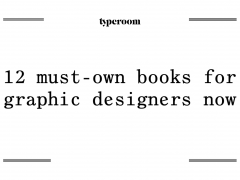
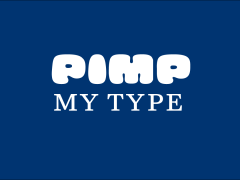


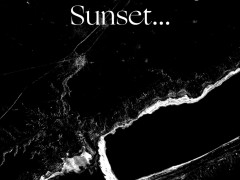
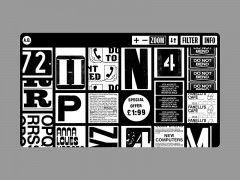
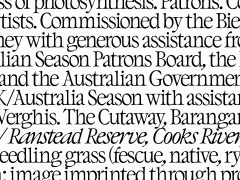
.gif)




